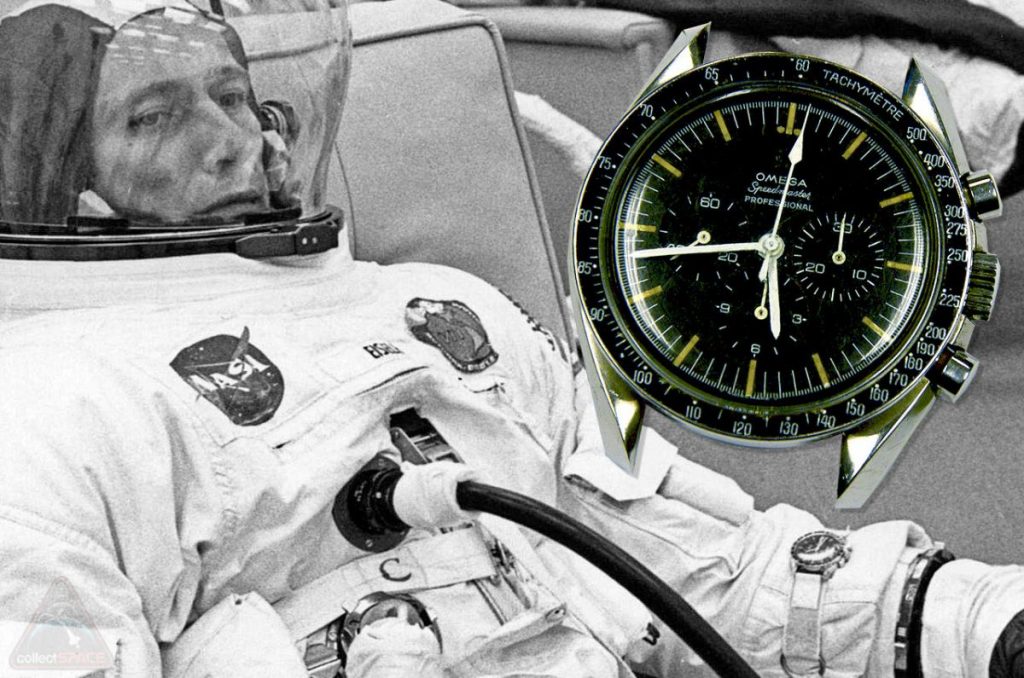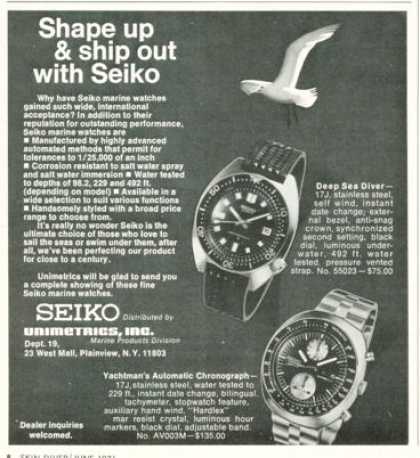What can you learn about building a brand from watch manufacturers and enthusiasts?
I’m on a journey to buy a watch. An automatic mechanical watch to be exact. I’ve been fascinated by the beauty of self-powered mechanical machines for as long as I can remember. I bought my first wind-up clock on a family trip to the UK as an 8 or 9 year old.

I have a short-list of items that I’m looking for. A watch with an automatic mechanical movement, that I can wear day-to-day, that tracks time (for training), that is water-proof, that looks timeless, and that is durable.
At first I saw a Seiko mechanical watch that fit the bill. However, due to the fact that I already have a Seiko, I thought this is as good a time as any to try something new.
And then the watch buying journey of twists and turns began.
Despite being a landlocked country, my first port of call was Switzerland. It is has a well established brand of making high quality watches.
My methodology was simple. Start with finding a watch that fit the criteria and then, because I’m not able to see these watches in person, research the reviews to see if it would be a good buy. This is where I began to face the labyrinth of brand.
I was first introduced to Hamilton watches and then Tudor, Delma, Tissot, Marathon, and Glycine. In that order. All Swiss watch manufacturers. Other than Tissot, all brands that were new to me.

I’m not generally particular about a brand. I look at quality and function, begin to love a product after use, and only then I become curious about the company, story and brand itself. However, without first-hand experience, each review I read would turn me down a different path. Brand mattered to them.
One reviewer would speak of heritage and say that another brand was preferable. So I would start my search again with their recommended model. Or one name was more known than another which could impact servicing, so again I was introduced to a new brand. Another reviewer would say that another movement in a different watch is better or had been used for longer, which may impact durability.
As I am looking for a waterproof watch that could be used as a timer, I began to narrow my search around dive watches. It turns out, some watch manufacturers had a history of being deeply involved with diving, while others were not, this was important to the reviewer. Even when everything seemed comparable – history, technology, movement – suddenly the watches’ parent company would come into question.
I just wanted a durable, quality, mechanical, waterproof and timeless watch.
In these reviews I learned about exhibition cases, servicing concerns, “hacking”, power reserve, manual winding, tolerances, origin, and that all movements were different. Some, with much to be desired.
Finally, after going around in circles, I thought I would look outside of Swiss watches and came across Yema, a French watch manufacturer. They made dive watches. They have heritage and technology. But when reading reviews the customer service of the company was being called into question – a new one to me.

It’s enough to pull ones hair out.
While out on a hike in the mountains and reflecting on all this new information, it struck me, there’s so much to learn about building a brand from watches.
In fact it was easy to categorize all the decision points into building blocks of brand.
A brand is the marriage between how a company presents itself and how the consumer perceives them. It is not one or the other. It is the intersection. And brand matters. It adds confidence to a purchase decision or introduces doubts.
We think of goodwill in business as the relationship, hopefully a positive one, between the business and the customer.
For example, a reviewer may make bold claims that a product is great or the service is terrible. But that statement alone does not make the brand. Lets say someone claims Rolex has terrible customer service. Do you think the Rolex brand will be tarnished? Of course not. Because there’s more to brand. But, another company, a lesser known one, may find it will take time to regain trust with their market after a statement like that is made.
So what is it that composes the brand?
When it comes to watches people care about honesty.
This came up again and again in reviews. Collectors didn’t mind if the mechanical movement was proprietary or if it was a 3rd-party movement. They didn’t mind if it was made in Switzerland or simply assembled there. What they did mind was if a company was misleading – claiming a component was made somewhere it wasn’t. If one part of the marketing story was found to be untrue, all was called into question. Integrity was lost.
Watch reviewers are very thorough. They’ll even go to a watch maker to have them dismantle the watch and inspect the parts to offer their opinion.

The opposite was the case as well, no pun intended. If a marketing story was found to be true, the brand would increase in appeal. The richer the story, the greater the value.
Story matters.
Brands that can boast having been in outer space, in battle, in the Navy, on explorations, or having innovated technology – all garner the admiration of the wearer.

In part, I believe because that’s the draw to a mechanical watch. The watch represents something. Both stylistically and idealistically. You’re respecting a moment, a demeanour, an accomplishment. But the story must remain intact.
Design matters.
Mechanical movements are becoming works of art, along with the dial, bezel and case. Watch enthusiasts care very much about aesthetics. But not in isolation. A well designed watch is one where the aesthetic matches the utility of the watch.

How this effects brand is when a watch company produces designs that are true to the function of the piece and their expertise. In other words, true to the heritage and roots of the company. Over time this design becomes iconic to that watch. Think of a Rolex Explorer.

A company that produces designs outside of their tradition, and without purpose, other than to reach a broader market – takes the company away from the brand they were establishing.
Whereas if a watch company works with the Navy, for example, to supply a new dive watch, this expands the brand as there is a strong sense of purpose behind the new design.
Even advertising matters.
Most marketers, especially digital ones, may think of awareness as brand building. Working to reach new audiences and make a logo known and trusted. But they advertise to get a purchase, rather than tell a story. That type of advertising is more in line with sales, and does not build brand equity.
Just like the watches themselves, every advertisement, every artwork, and every article produced becomes the brand’s artifacts over time. An advertisement may showcase a movement or a diver. The visual design of the advertisement must mirror both the character of the watch and the copy be true to the integrity of the story.

From what I can gather, one example where advertising backfired was when Tudor watches sponsored Lady Gaga as their spokesperson. The reason for this is that the person who purchased Tudor watches couldn’t relate to her, despite her success within the music industry and her gritty determination. It was off-brand. And the forums were not quiet about it.
The next thing that stands out is quality & engineering. And also quality control.
The piece must meet or exceed all expectations. One expects a Swiss watch, for example, to set the standard for craftsmanship. If play is found in the bezel or the band, a part misaligned, or a movement appears poorly assembled or unrefined, it is remarkable to the reviewer. Mido was a brand that consistently outperformed on quality.

Quality and quality control are not the same thing, I learned. Watch reviewers seemed surprisingly accommodating of poor quality control issues, as long as the watch manufacturer was quick to remedy the situation by replacing the watch with a quality of engineering one would expect. Essentially, to stand behind their own brand.
Which brings us to customer care & service.
When buying a watch one does not expect an issue. It is assumed that in this day and age your watch will arrive beautifully made and performing within specification. There is a wide array of variance to specifications, depending on the watch, the movement, and the meticulousness of the manufacturer, which the buyer is responsible for knowing when choosing their watch. However, if an issue does arise, one does expect a courteous resolution. This was made clear by the comment threads. And it doesn’t take many negative comments to turn-off would be buyers new to a brand.
Because I’m new to automatic watches I hadn’t considered the future need of servicing one. So when looking to buy a watch, customer service wasn’t high on my list of considerations. So I was surprised to see reviewers mention it. But it is clear, that if left unresolved, poor customer service does tarnish an otherwise faultless brand. Ever more so in service-oriented businesses, whose brands are built on service.
In conclusion
Brand is not simply the perception of the marketplace. It is a product of the company – engineering, service, quality control & marketing – working together to create value and establish the company name firmly within the world. It’s simple; the product must live up to the hype. And demand will follow.
This constant forging of perception, with how a company presents its products and the public’s opinion of the end-result, either increases the brand’s value and draw or leaves it in the chasm of commonplace.
Which means a business that intentionally masters the key components of a brand, will eventually with determined effort, establish itself as the brand they aspire to be.
The key components are Integrity, Story, Design, Advertising, Quality, Service, Credibility, Innovation & History.
Great watch brands are amazing at presentation and imagery in story telling. Their websites and marketing reinforce the look, feel and narrative they are communicating. They leverage partnerships, such as sporting events, to establish credibility. When new to a subject or product one trusts the opinions of experts. If they are respected by the professionals and icons we respect, we feel they in turn can be endeared by us. They push the boundaries of engineering. Pioneering new innovations of power reserves, deep sea depths, and time keeping. There is an integrity to the way they build watches and market themselves. Under scrutiny there is a consistent and uncompromising adherence to honesty and quality. They are what they say they are. Their service is of the same quality as their products. Treating their customers with care and respect. Their advertising tells their story. With charm, gusto and beauty. And over time this creates a rich history of tradition, accomplishments and heritage.
Then when a consumer finds a product with design and engineering that appeals to them, they will purchase it with confidence. This is the power of brand, confidence.
Every company will have a brand that is unique to them. Just as every person is different, so is every business. And the individual values, positioning, and journey of each company will contribute accordingly and attract customers who resonate with it.
It is the responsibility of the company to produce great products. To tell their story. To communicate their values. To create partnerships that strengthen their credibility. And to market themselves in a way that aligns with their core message.
To this I say to brands.
“It doesn’t matter where you are, you are nowhere compared to where you can go.”
Bob Proctor
Time will tell your story.








 There are few people who have ever achieved the dramatic successes Steve Jobs did. It’s probably a good idea then, if you are building a company, to studying some of the insights Steve understood naturally. Some of these were his own thoughts, others he garnered from his mentors.
There are few people who have ever achieved the dramatic successes Steve Jobs did. It’s probably a good idea then, if you are building a company, to studying some of the insights Steve understood naturally. Some of these were his own thoughts, others he garnered from his mentors.